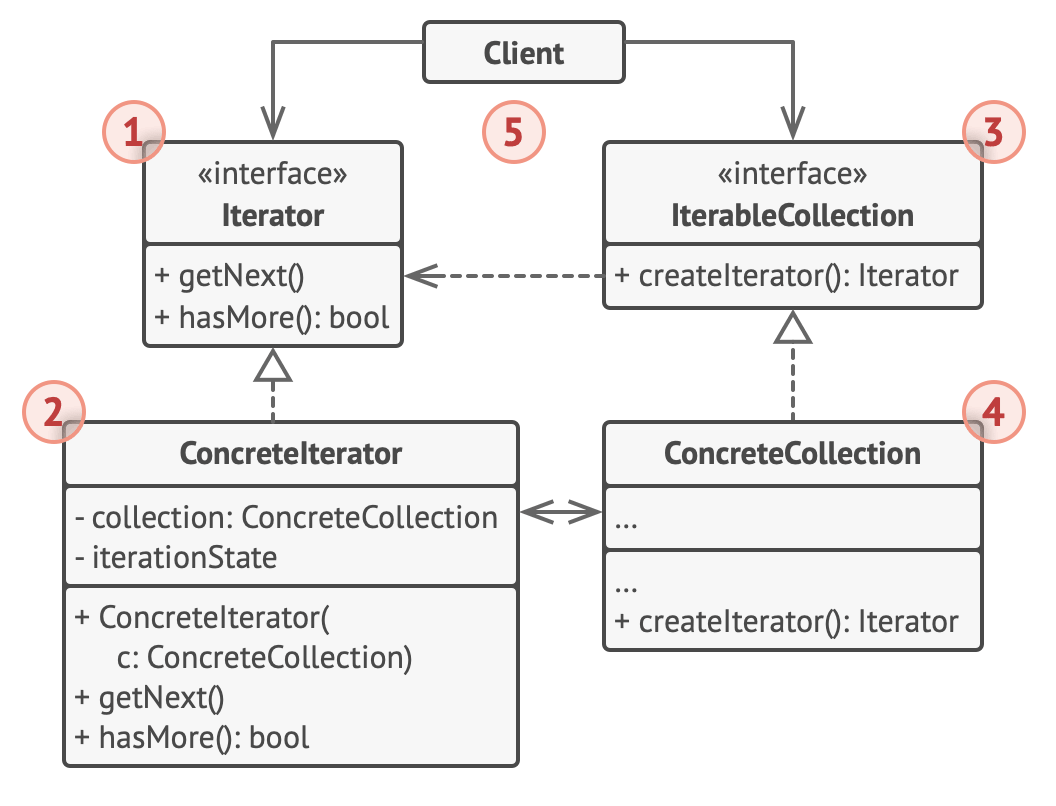Iterator design pattern
- it allows sequential traversal through a complex data structure without exposing its internal details
Problem
- most collection store their elements in simple list
- however some are based on stacks, trees, graphs, and other complex data structures
- regardless of how a collection is structured, it must provide some way of accessing its elements so that other code can use it
- sounds like an easy job that can be done just by looping over all the elements
- but how do you sequentially traverse elements of a complex data structure (e.g.: tree)
- 1 day you might need depth first traversal, another day you might need breadth first traversal, another day you might need something else like random access
- but how do you sequentially traverse elements of a complex data structure (e.g.: tree)
Solution
- extract the traversal behavior of a collection into a separate object called an iterator
- the iterator object encapsulates all of the traversal details
Real world Analogy
- you are lost and wished to arrive at a certain destination
- solution
- walk around and try to find the destination, you might waste a lot of time walking in circles, or not find the destination
- download a navigation app for navigation. smart and inexpensive
- spend some money and hire a local guide
- these 3 solutions act as iterators over the vast collections of destinations you wish to go
Structure

-
The Iterator interface declares the operations required for traversing a collection: fetching the next element, retrieving the current position, restarting iteration, etc.
-
Concrete Iterators implement specific algorithms for traversing a collection.
- The iterator object should track the traversal progress on its own.
- This allows several iterators to traverse the same collection independently of each other.
-
The Collection interface declares one or multiple methods for getting iterators compatible with the collection.
- Note that the return type of the methods must be declared as the iterator interface so that the concrete collections can return various kinds of iterators.
-
Concrete Collections return new instances of a particular concrete iterator class each time the client requests one.
- You might be wondering, where’s the rest of the collection’s code? Don’t worry, it should be in the same class.
- It’s just that these details aren’t crucial to the actual pattern, so we’re omitting them.
-
The Client works with both collections and iterators via their interfaces.
- This way the client isn’t coupled to concrete classes, allowing you to use various collections and iterators with the same client code.
- Typically, clients don’t create iterators on their own, but instead get them from collections.
- Yet, in certain cases, the client can create one directly; for example, when the client defines its own special iterator.